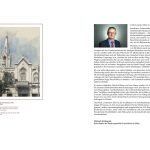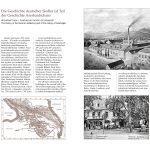«German Heritage in the Architecture of Azerbaijan»
The history of the German is the part of the history of Azerbaijan. The first wave of the German colonists arrived in Azerbaijan in early XVIII century. During many years, the Germans felt kindness of the Azerbaijani population, and in return, beneficially impacted the life of the local population. Colonists, among whom were teachers, doctors, engineers, architects, and representatives of other professions, made a significant contribution to development of agriculture, as well as science, education, healthcare, economic and social infrastructure of Azerbaijan.
The German architects made a substantial contribution to creation of the architectural masterpieces of the capitalistic Baku of end XX – beginning of XX centuries. Talented architects, who worked in the European style, were striving to use characteristics of the local architecture, to convey in the massing compositions the interpretation that would best express their artistic essence. During that period, such architects as Johann Edel, Adolf Eichler, Nikolay Von Der Nonne, brothers Carl and Otto Hippius, Gut Fortunat, Ferdinand Lemkul, Robert Marfeld, Leopold Bilfeld, Paul Stern, Ditrich Tissen, Vladimir Somonson, Franz Grosetti, Adolf Von Skoyan and others worked in Baku. The German architects designed several hundreds of buildings and constructions in Baku: apartment and tenement buildings, industrial facilities, bridges, churches, mosques, etc.
The history of the German colonists is the part of the Azerbaijani history. It has been more than eighty years as the Germans left the Azerbaijani lands. But due to their work ethics, integrity, and friendliness, the Germans left a good memory after themselves. Currently, the role of the cultural ties is important in the interstate relations. In this regard, the Azerbaini-German cooperation is based on very solid historical foundation with almost two hundred years of shared history.







